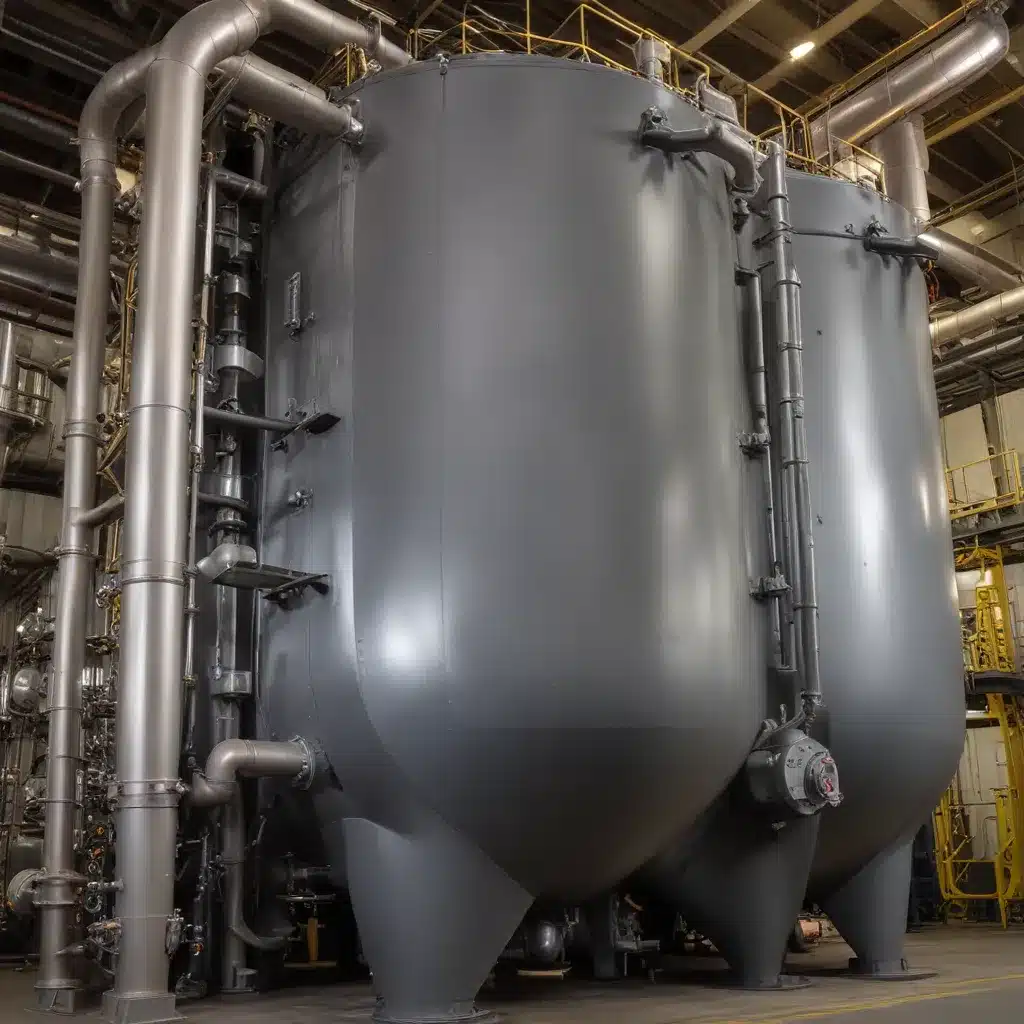
The Importance of Boiler Combustion Optimization
Boilers are the backbone of numerous industrial processes, providing essential steam and hot water for heating and power generation. As the demand for energy efficiency and reduced emissions continues to grow, optimizing boiler combustion has become a crucial focus for industry experts. By enhancing the performance of boiler heat exchangers while minimizing harmful emissions, companies can not only improve operational efficiency but also contribute to a more sustainable future.
Understanding the Challenges of Boiler Combustion
Boilers are complex heat exchangers that work on the principles of heat transfer, extracting heat from flue gases to heat water. However, the exhaust gases, primarily composed of CO2 and water vapor, can also carry pollutants such as CO and NOx. Balancing the reduction of these emissions with enhancing thermal efficiency and decreasing pressure drop is a delicate and challenging task.
The inherent counteracting behaviors of NOx and CO emissions make this optimization process even more complex. NOx emissions typically increase at higher combustion temperatures, while CO emissions tend to rise with incomplete combustion, often at lower temperatures. Finding the right balance to minimize both emissions while improving overall system performance requires a carefully designed strategy.
Leveraging Advanced Optimization Techniques
Traditional trial-and-error methods for boiler design and optimization often fall short in addressing these complex challenges. However, the emergence of sophisticated optimization techniques, such as the gradient-based adjoint method, has opened new avenues for enhancing boiler performance and reducing emissions.
The Gradient-Based Adjoint Method
The gradient-based adjoint method is a powerful optimization approach that leverages computational fluid dynamics (CFD) simulations and advanced deformation techniques to achieve remarkable results. This method involves encapsulating the geometry to be modified within a Free-Form Deformation Box (FFDB), which allows for a highly controllable, smooth, and robust deformation process.
The key advantage of the adjoint method is its efficiency in computing gradients. While a naive gradient-based approach would require a large number of CFD simulations (n_DV + 1 baseline CFD simulation for a single design iteration), the adjoint method only requires computational resources equivalent to two CFD simulations, regardless of the number of design variables. This significant reduction in computational cost makes the adjoint method an attractive choice for optimizing complex boiler systems.
Addressing Geometric and Mesh Challenges
However, the use of deformation in optimization can introduce two primary challenges: geometry folding and mesh folding. Geometry folding occurs when two FFDB vertices move in opposite directions with significant magnitudes, causing the geometry to overlap and create invalid geometries. Mesh folding, on the other hand, can happen when the mesh folds towards the boundary, creating erroneous boundaries that complicate the meshing tool’s ability to identify deformations correctly.
To address these challenges, experts have developed strategies such as introducing geometrical constraints for the FFDB vertices and performing deformations on a very coarse mesh. These approaches help to ensure the robustness and reliability of the optimization process, even for highly complex geometries.
Optimizing Boiler Performance and Emissions
By leveraging the gradient-based adjoint method and addressing the challenges associated with deformation, researchers and engineers have been able to achieve remarkable results in boiler optimization.
Single-Objective Optimizations
Initial optimizations have focused on reducing specific pollutants, such as CO or NOx emissions. While these singular pollutant-focused optimizations effectively reduced the respective pollutants, they often led to trade-offs that negatively impacted overall system efficiency and environmental compliance.
Multi-Objective Optimizations
To address this, researchers have explored multi-objective optimizations, which aim to optimize multiple target variables simultaneously. These optimizations have yielded promising results, balancing the reduction of both CO and NOx emissions while maintaining or even improving overall system efficiency.
One successful case study (Case 10) demonstrates the potential of this approach. The optimizer expanded the trailing edge of the heat exchanger, leading to cooling when most chemical conversion is complete. This lowered the temperature without significantly increasing pollutants and created more space for CO to oxidize further to CO2, diminishing CO levels. To reduce NOx, the optimizer pushed the leading edge of the heat exchanger closer to the flame front, reducing NOx formation.
By leveraging these advanced optimization techniques, boiler manufacturers and operators can unlock significant improvements in boiler efficiency, performance, and emissions reduction. The ability to move beyond traditional trial-and-error practices and employ intelligent, simulation-based methods opens the door to innovative boiler designs that meet both customer demands and stringent environmental regulations.
Unlocking the Full Potential of Boiler Systems
The advancements in boiler combustion optimization, enabled by tools like the gradient-based adjoint method, are poised to have a profound impact on the plumbing and heating industry. By enhancing the performance of boiler heat exchangers while minimizing harmful emissions, these optimization techniques contribute to the creation of more efficient and environmentally-friendly boiler systems.
At DD Plumbing and Heating, we are committed to staying at the forefront of these technological advancements. Our team of experienced professionals is well-versed in providing practical tips and in-depth insights on boiler maintenance, repairs, energy efficiency, and home comfort solutions. By understanding the latest innovations in boiler combustion optimization, we can better serve our customers and help them achieve their goals of improved energy efficiency and reduced environmental impact.
Whether you’re a homeowner seeking to upgrade your boiler system or a business owner looking to optimize your industrial processes, the insights and strategies presented in this article can help you navigate the path towards a more sustainable and efficient future. By embracing the power of advanced optimization techniques, we can unlock the full potential of boiler systems, contributing to a greener and more prosperous world.


